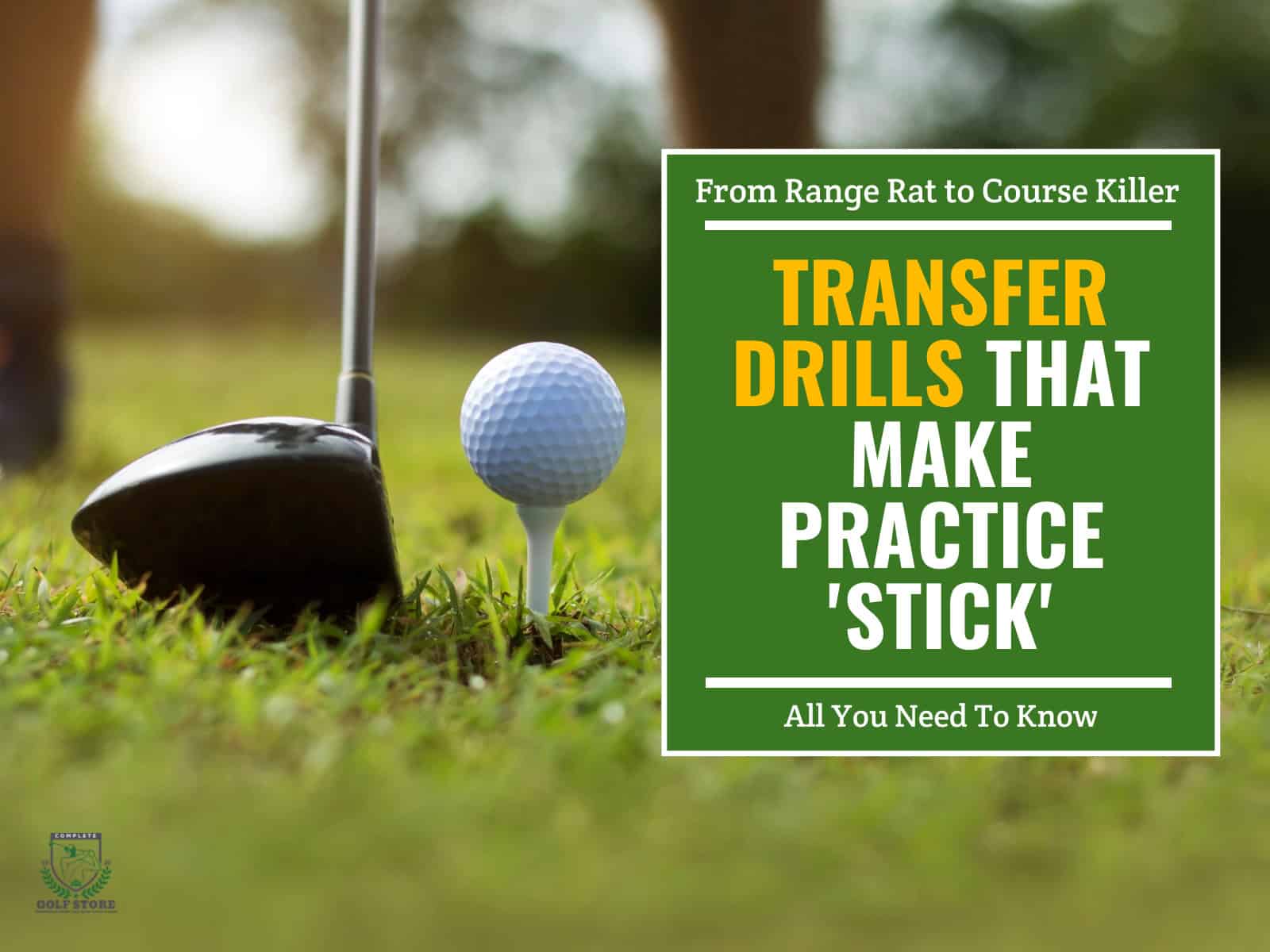Golf is easy when the ground is flat. The trouble starts when the ball perches on a slope and balance goes out the window. That’s when even a smooth swing can turn ugly.
With a few simple setup tweaks like shifting weight, matching shoulders to the slope and picking the right club, you can stay balanced and make clean contact. Think of it as learning a cheat sheet for slopes, not a brand-new swing.
What follows is a step-by-step masterclass for sidehill, uphill and downhill lies, plus drills you can do without fancy training tools. If you’ve ever wished for quick answers you could keep in your bag, this is it.
- 1) Key Principles for Uneven Lies
- 2) Sidehill Lies
- 3) Uphill Lies
- 4) Downhill Lies
- 5) Practicing Without Fancy Facilities
-
6)
Frequently Asked Questions
- 6.1) How can I tell if my stance is too wide on a slope?
- 6.2) Is it better to swing softer or harder on severe slopes?
- 6.3) Do uneven lies affect putting as well as full swings?
- 6.4) How do I practice judging slope severity during a round?
- 6.5) Can fitness training help with uneven lies?
- 6.6) What should I do if the slope forces an uncomfortable swing path?
- 6.7) Are there clubs that handle slopes better than others?
- 7) Final Thoughts
Key Principles for Uneven Lies
Every uneven lie has its own tricks, but the fundamentals never change. Before you swing, you need a clear plan: where the ball will start, how the slope will shape it and what adjustments keep you balanced. These core principles are your foundation.

Assess the Slope First
First things first, you’ve got to read the ground. A quick look at the slope tells you where the ball wants to go before you even swing. Think of it like driving on a banked road; the slope guides the path unless you correct for it.
Match Your Body to the Ground
Next, match your body to the slope. Set your shoulders and spine so they tilt with the ground. This keeps your swing moving with the slope instead of fighting it. Balance becomes easier, and clean contact follows.
Adjust Ball Position and Weight
Ball position matters just as much. On uphill lies, slide it a touch forward. On downhill lies, set it slightly back. Sidehill lies demand tweaks too, sometimes farther away, sometimes closer. As a rule of thumb, let the ball favor the higher foot while your weight leans toward the lower foot.
Choose the Right Club
Slopes change loft at impact, which means distance control shifts. Uphill shots fly higher and shorter, so grab more club. Downhill lies flatten loft, sending the ball lower and farther, so go down a club. Sidehill lies often steal distance; don’t be afraid to club up.
Aim with the Slope in Mind
Finally, adjust your aim. A slope nudges the ball sideways—right-handers should expect uphill and above-feet lies to curve left, downhill to leak right and below-feet lies to fade right as well. The steeper the slope, the more you adjust.
Sidehill Lies
Sidehill lies test balance and ball control more than power. They influence clubface angle and swing path, so knowing how to adjust your stance and aim makes all the difference.

Ball Above Feet
When the ball sits above your feet, gravity wants to shut the clubface. That’s why shots often draw or hook left. To counter this, choke down on the grip and stand a touch closer. This shortens the swing arc and keeps the club under control.
Next, flatten your swing like a baseball move. The slope tilts your shoulders, so let the club trace that line instead of fighting it. Aim slightly right of your target, since the ball almost always curves left from this lie.
For practice, drop a few balls on a slope at the range edge. Grip down, swing smooth and notice how the ball flight changes with each adjustment.
Ball Below Feet
With the ball below your feet, the challenge flips. The clubface tends to stay open, sending shots right. Balance also gets tricky, as you feel like you’ll topple forward. Bend your knees more and keep them flexed throughout the swing.
Stand a little farther from the ball and resist the urge to choke up. This helps you reach the ball without hunching. Aim left of your target to offset the fade or slice the slope produces.
A simple drill works well here: place a ball on a downslope edge, set up with strong knee flex and swing while holding posture. The ball may still curve right, but with practice you’ll know exactly how much.
Uphill Lies
An uphill lie looks friendly at first glance, but it changes both ball flight and distance. The slope adds loft, so the shot launches higher and often lands short. If you don’t adjust, you’ll come up well short of your target.

Ball Flight Tendencies
Expect the ball to fly higher, spin more and roll less. For right-handed golfers, the slope also tilts the body, making the ball want to turn left. Knowing this helps you plan before you swing.
Setup Adjustments
Move the ball slightly forward in your stance. Let your shoulders match the slope so your swing traces the hill, not the flat ground. Shift a little more weight to your back foot to keep balance steady.
Club Selection
Since the ball flies higher and carries less distance, take more club. For example, if you normally hit an 8-iron, grab a 7-iron. On steeper slopes, you may need two clubs more. Trust the loft; the slope will add plenty.
Practice Drill
Find a mild slope on the course. Set up with the ball forward, shoulders tilted, and swing with the slope. Pay attention to balance and how far the ball carries compared to flat ground. Logging the difference helps you make better decisions when it counts.
Downhill Lies
A downhill lie is one of the trickiest spots you’ll face. The slope lowers loft, changes trajectory and makes balance a battle. If you don’t prepare, the ball skids off low and right before you know it.

Ball Flight Tendencies
Expect a flatter flight with extra rollout. The ball often leaks right for right-handers since the clubface tends to stay open. Distance can surprise you, as shots usually go farther than planned.
Setup Adjustments
Play the ball slightly back in your stance. Let your weight favor the front foot and match your shoulders to the slope. This prevents fat shots from hitting behind the ball. Keep your hands ahead of the clubhead at address to lock in clean contact.
Club Selection
Since loft is reduced, you don’t need as much club. A 7-iron may fly like a 6-iron here. Long clubs are risky because they’re harder to launch; stick with mid-irons or hybrids when possible.
Practice Drill
Head to the edge of a range where the ground falls away. Place a ball, set up with weight forward and swing along the slope. Focus on staying down through impact and avoiding the urge to scoop. Note how much lower the ball launches compared to a flat lie.
Practicing Without Fancy Facilities

Most ranges are flat, but the course is never that kind. You can still prepare for uneven lies without special equipment if you get creative.
Use the Edges of the Range
Look for slopes along the boundary of the range or near berms. Drop balls there and practice hitting from the sidehill, uphill, or downhill spots. It may not be perfect, but it gets your body used to awkward footing.
Build Drills at Home
A simple mat, a piece of plywood or even a sturdy platform can mimic slopes. Stand with one foot higher than the other, take half swings, and focus on balance. Household items are enough to create uneven stances that sharpen your feel.
Track Your Adjustments
Bring a rangefinder on the course. Note how many clubs you need to add or subtract on different slopes. Over time, you’ll build a personal log that helps you judge distance more accurately when the ground tilts.
Train Balance and Stability
Repeat swings with a narrow stance or on slightly uneven surfaces. The goal isn’t power; it’s keeping your body steady through impact. The steadier you get, the easier it becomes to trust your swing on real slopes.
Frequently Asked Questions
Uneven lies raise plenty of questions that don’t always come up in practice. Here are answers to common situations golfers face when the ground refuses to stay level.
How can I tell if my stance is too wide on a slope?
If you feel locked in and can’t make a smooth turn, your stance is likely too wide. Narrow it slightly until you can rotate without losing balance.
Is it better to swing softer or harder on severe slopes?
A softer, controlled swing usually wins. Power often throws you off balance, while a smoother move keeps contact clean.
Do uneven lies affect putting as well as full swings?
Yes. Sidehill putts break more than they look, and downhill putts run faster with less spin. Reading slopes is as critical on the green as it is in the fairway.
How do I practice judging slope severity during a round?
Use a rangefinder with slope mode or crouch behind the ball to see how much the ground tilts. Over time, you’ll learn how each angle changes ball flight.
Can fitness training help with uneven lies?
Absolutely. Strong legs and a stable core make it easier to hold posture on awkward footing. Balance drills and core workouts pay off on sloped lies.
What should I do if the slope forces an uncomfortable swing path?
Adjust your target, not your swing. Play a safer shot that works with the slope rather than forcing a motion you don’t trust.
Are there clubs that handle slopes better than others?
Yes. Hybrids and higher-lofted clubs are more forgiving on uneven ground. Long irons and fairway woods are harder to strike cleanly when balance is compromised.
Final Thoughts
Uneven lies don’t demand a new swing. They ask for smart adjustments. When you know how the slope tilts your body and changes the ball flight, you can plan instead of guess.
Think of it as problem-solving on the course. A forward ball here, a grip adjustment there, and the game gets easier. The slope becomes less of a foe and more of a puzzle you know how to solve.
Practice turns that puzzle into second nature. Whether it’s sidehill, uphill or downhill, the same rule applies: stay balanced, trust the slope and swing with it.
The next time your ball rests on a slope, you’ll already know what to do. The question is, will you have the nerve to trust the adjustment when the shot matters most?
For golfers practicing without premium technology, exploring DIY golf feedback without launch monitor methods can help you track distance and dispersion.
Thanks for reading!





